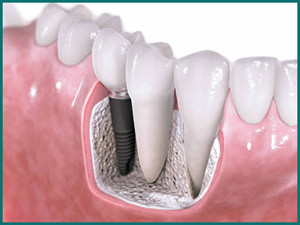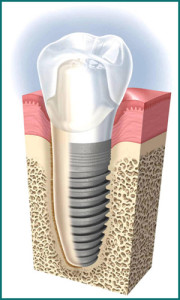What are dental implants?
Dental implants are little titanium screws that are placed in the bone (superior or inferior maxilla) with the objective of supplanting the roots of lost dental pieces, which allows the replacement of the natural piece with a better functioning and with equal or better aesthetics artificial piece.
Are dental implants for me?
It is highly likely that if you are reading this, you or someone you know have lost teeth. Whether lost by an accident, illness or caries, dental implants constitute an excellent replacement option for anyone.
Dental implants can be used when:
- There is one or more teeth missing on the mouth
- Growth in the maxilla is completed
- The removable prosthesis is not comfortable or lacks aesthetic
- The fixed and/or removable prosthesis leaves you unsafe
- There is a lack of stability and retention in the removable prosthesis
- There is difficulty in chewing
- There is a need for assistance in orthodontic movements.
Purpose of dental implants
The main purpose of implants is to recuperate the function of teeth and the aesthetics of the smile, filling the spaces left by missing teeth condemned to removable and/or fixed prosthesis, when these are no longer of the patient’s liking.
Improve the quality in chewing, distributing the occlusal loading of the remaining teeth.
Stopping bone resorption: The alveolar bone holds the teeth to allow chewing. When one or more teeth are missing, the bone loses its function and is reabsorbed by the organism.
Phases of Treatment with Implants
- Clinical, radiographic, and laboratory exams.
- Surgery for the installation of implants: it’s a simple and personalized procedure, depending on the clinical situation, as well as the preferences of the patients and dentist/surgeon.
- Post-surgery: the recovery of the patient subjected to implant surgery is very fast. All the procedures and care needed for a painless post-op will be briefed. It is of utmost importance that the patient follows all the instructions given by the professional.
- Printing, tailoring, and installation of prosthesis: It can be done immediately after the installation of the implant, 3 or 6 months after the surgery. This will depend on a series of factors that will be explained by the professional.
- Maintenance and hygiene: Sanitation and maintenance are fundamental for the treatment. The best way to take care of the prosthesis will be indicated, but a reminder that sanitation and periodical visits to the odontologist are essential for the success of the treatment.
